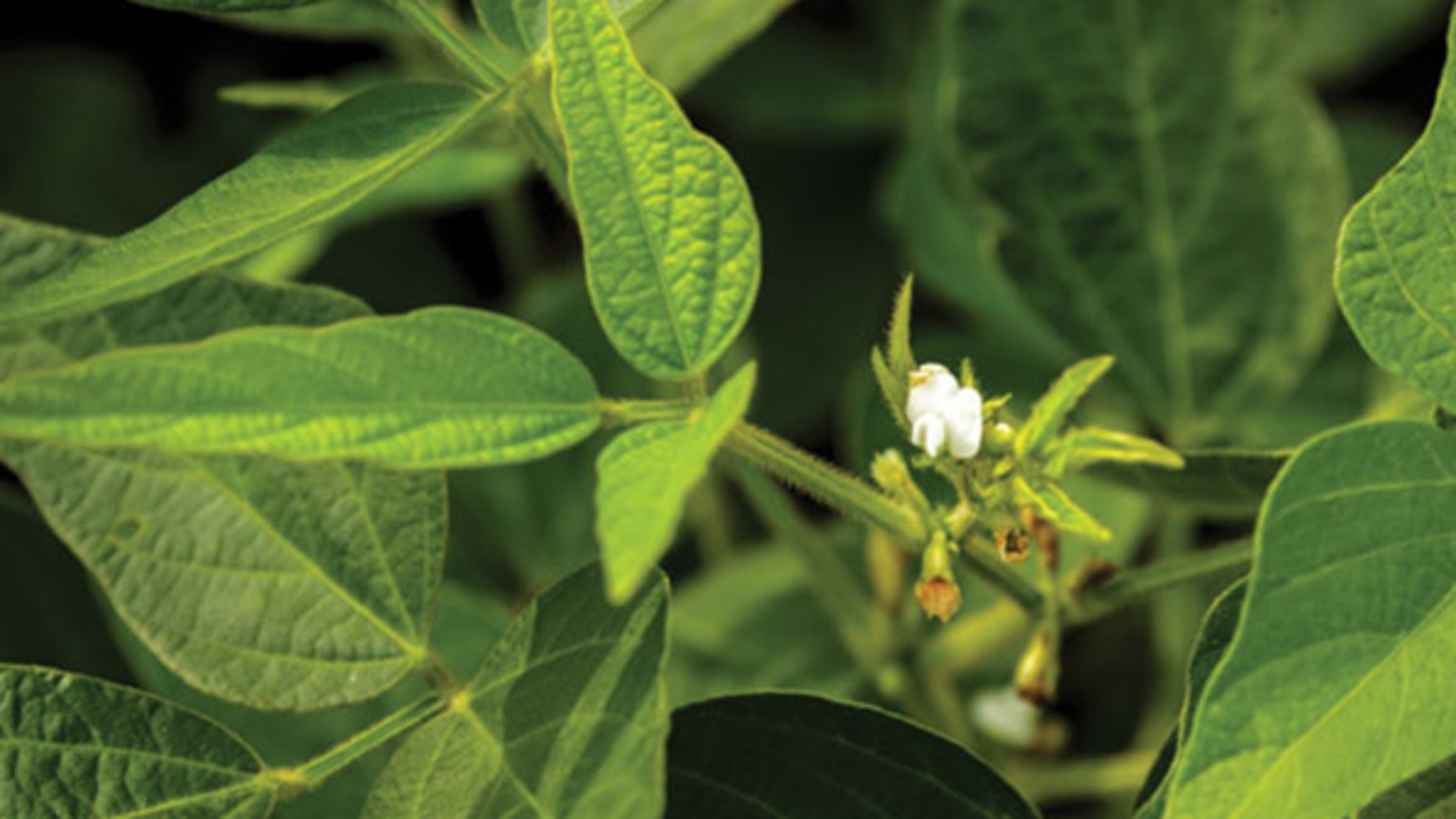Healthy soybeans from the bottom up

Three ways fungicides help soybean plants stay greener longer
Colors are important in agriculture. For example, there are red tractors and green tractors, blue seeds and orange seeds, purple potato flowers and yellow sunflowers. But when you look at the rainbow of colors in agriculture, green is one of the most important indicators when it comes to a soybean plant.
A green plant tells growers their crop is growing efficiently from the time it emerges until it reaches the end of its reproductive stages. When soybeans stay greener longer, they are able to be more productive, meaning the grain bins can be fuller come harvest. BASF fungicides like Priaxor® fungicide promote Plant Health benefits, such as stress tolerance, growth efficiency and disease control from the bottom up, helping soybeans stay greener longer in three ways:
1. Preserving bottom leaves
It’s important to preserve and retain the bottom leaves on the plant throughout the season. Often, leaves are dropped when the plant is under stress from factors such as diseases or adverse weather like high heat or hail.
When a plant is under stress, it produces ethylene, which is the same gas that initiates fruit ripening. In soybeans, ethylene production shuts down plant growth and reduces productivity, which may lead to leaf browning or premature pod dropping if not addressed. A preventative application of fungicide can help preserve bottom leaves and keep the plant green by promoting nitric oxide production, which inhibits ethylene. As a result, the plant can continue to grow, be productive and recuperate more quickly once the stress is mitigated.
2. Maintaining middle leaf growth
Unlike corn, yield potential in soybeans is determined by the middle third of the plant. In corn, the ear is the ultimate hub for sugar and other carbohydrates, so photosynthetic production from the entire plant helps to drive ear production. With soybeans, on the other hand, carbohydrate distribution is more localized, so the pod fill is driven by the photosynthetic production from the neighboring leaves.
Retaining the green leaf tissue throughout the plant helps transfer the energy to all of the developing pods, filling them and helping them grow more efficiently. Priaxor fungicide helps to maintain middle leaf growth by increasing the plant’s photosynthetic rate and nitrogen use efficiency. Furthermore, Priaxor provides fungal protection and increases the plant’s tolerance to bacterial and viral infections.
3. Conserving top leaves
The top leaves of the soybean plant are the leaves that most often get the greatest amount of nice golden sunlight. A proactive fungicide application, between the R2 and R4 growth stages, can maximize the amount of photosynthetic production in soybeans.
Photosynthesis is the engine that drives yield. So, when photosynthesis operates efficiently, and disease pressure is managed, plants grow healthier and stay greener longer.
When applied to soybeans, fungicides help control the green of the plant and shield against diseases like target spot and frogeye leaf spot; additionally, fungicides provide the benefits of growth efficiency and stress tolerance. By helping plants stay greener, healthier and more productive from the bottom up, Plant Health benefits can help growers to see more green in their fields and grain in their bins.
To learn more about the portfolio of soybean products available with BASF, visit GrowSmartSoybeans.com.
Always read and follow label directions.
Priaxor is a registered trademark of BASF.
About BASF’s Agricultural Solutions division
With a rapidly growing population, the world is increasingly dependent on our ability to develop and maintain sustainable agriculture and healthy environments. Working with farmers, agricultural professionals, pest management experts and others, it is our role to help make this possible. That’s why we invest in a strong R&D pipeline and broad portfolio, including seeds and traits, chemical and biological crop protection, soil management, plant health, pest control and digital farming. With expert teams in the lab, field, office and in production, we connect innovative thinking and down-to-earth action to create real world ideas that work – for farmers, society and the planet. In 2017, our division generated sales of €5.7 billion. For more information, please visit www.agriculture.basf.com or any of our social media channels.
About BASF
At BASF, we create chemistry for a sustainable future. We combine economic success with environmental protection and social responsibility. The more than 115,000 employees in the BASF Group work on contributing to the success of our customers in nearly all sectors and almost every country in the world. Our portfolio is organized into five segments: Chemicals, Performance Products, Functional Materials & Solutions, Agricultural Solutions and Oil & Gas. BASF generated sales of €64.5 billion in 2017. BASF shares are traded on the stock exchange in Frankfurt (BAS) and as American Depositary Receipts (BASFY) in the U.S. Further information at www.basf.com.
